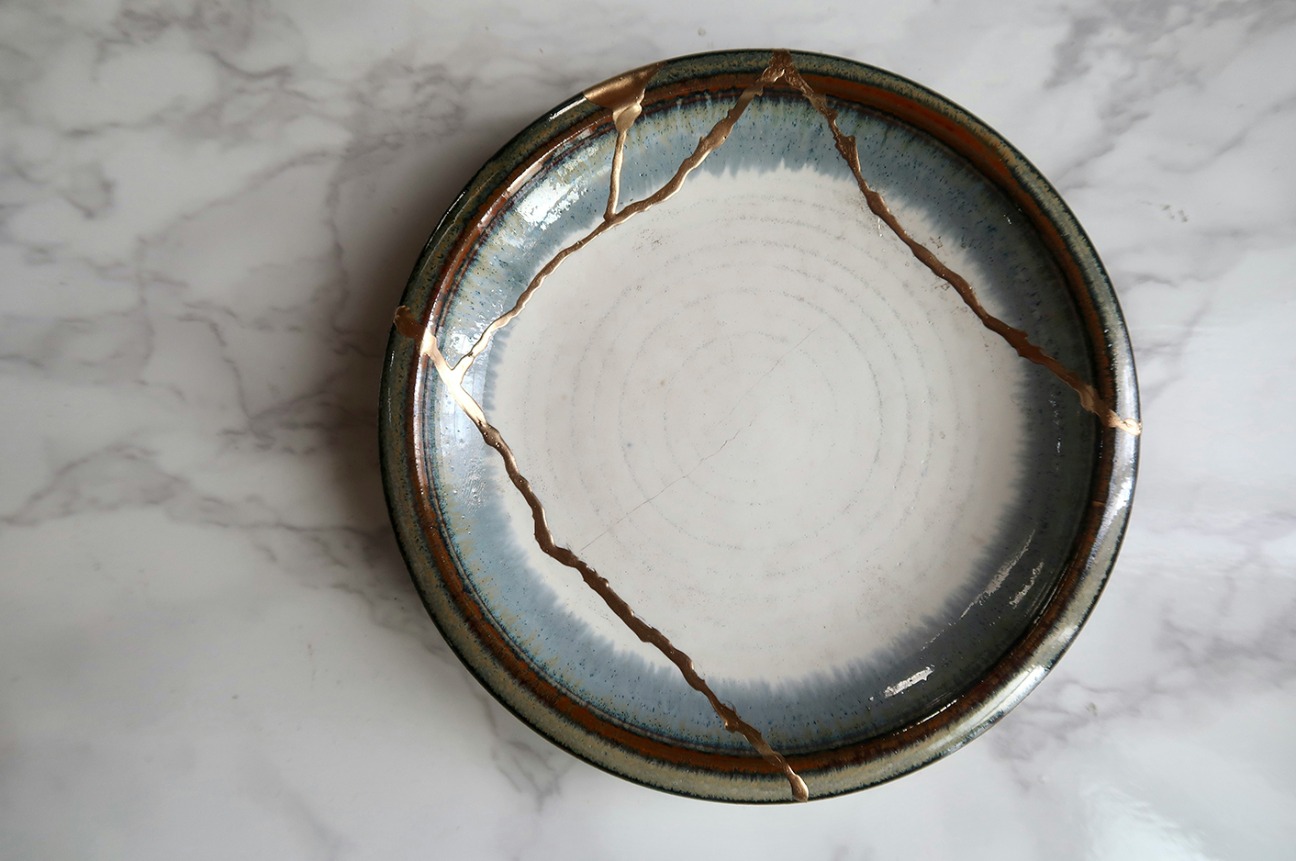
Kintsugi (or golden joinery) is a centuries-old practice of mending broken ceramics with a lacquer mixed with a metal powder, commonly gold or silver. A Japanese tradition employed to mend what is broken. It does not hide the damage, instead it embraces what is flawed or broken, bringing the pieces back together and creating something of greater value and beauty.
It’s a wonderful philosophy for healing. Most of us live with brokenness of some sort. As Gabor Maté has pointed out, trauma is not what happened to you; it is what happened inside you because of what happened to you. Experiencing trauma is a personal affair – two people who experience the same event could walk away very different reactions. One might find themselves ‘shattered’ by the experience, and the other brushes it off as though it is of little concern. Trauma is in the eye of the beholder if you like. Your internal experience of trauma can leave you feeling like you have been shattered into many pieces, fragmented, broken. The saying “pull yourself together” has an almost literal meaning in this sense. Perhaps your memories feel disjointed, or there seems to be gaps where you don’t remember anything at all. Feeling shattered, or fragmented can be challenging. You might find yourself having conflicting thoughts and/or emotions; it might feel like you don’t know who you are anymore; or it might feel like you are on “auto-pilot”, not fully present, forgetful, or just plain exhausted.
Learning to put the pieces back together can take time, but if you look carefully at each piece, take in the shape of it, perhaps sand back the edges a little, you can start to stick them back together with some “gold” wisdom, and reconnect to yourself so that you can be a greater version of you, feeling more complete, wounds and all.
If you would like to learn more about the art of Kintsugi, you can read about it at Traditional Kyoto, The Japanese art form of kintsugi: embracing the imperfections of life, or on Britannica.